From Workshop to Worldwide: A Story of Quality, Craft, and Strategy
The Iranian leather industry, one of the country’s oldest and most authentic crafts, is rooted in centuries of experience, artistry, and creativity. From traditional tanning in cities such as Tabriz, Hamedan, and Isfahan, to the meticulous handmade production of bags and shoes in small workshops, this industry has always carried a story beyond a mere product—representing Iranian culture and identity.
Handcrafted leather products from Iran, particularly in the field of bags and shoes, offer a unique combination of material quality, artisanal skill, and cultural authenticity. This combination is often considered a benchmark of luxury and added value in many international markets. However, the journey from a small workshop in Iran to the luxury storefronts of Milan or Paris is a complex and challenging path.
Entering global markets requires a deep understanding of consumer preferences, compliance with international standards, leveraging modern marketing tools, and a clear strategy for distribution and sales. Along this path, not only the physical quality of the product matters, but also the story behind it. Brands that successfully narrate their history, values, and production process stand a greater chance of building trust and customer loyalty worldwide.
In addition, specialized export platforms and brokerage services such as MMF Market can play a vital role in reducing barriers, facilitating connections, and managing the complexities of the export process. With their expertise, global networks, and digital tools, these platforms serve as a bridge between Iran’s production capacity and global market opportunities.
This article, through an analytical approach supported by comparative tables, maps the journey of Iranian leather brands from workshop to global showcase, while offering practical solutions for success along the way.
Table 1 – Comparison of Iran’s Current Position in the Global Handmade Leather Industry
| Indicator | Iran | Italy | Turkey | India |
|---|---|---|---|---|
| Material Quality | Very high (natural leather, traditional tanning) | Very high (premium calf and lamb leather) | High (cow and goat leather) | Medium to high (cow and buffalo leather) |
| Design Variety | Medium to high | Very high (continuous innovation) | High | Medium |
| Production Costs | Low to medium | Very high | Medium | Low |
| Market Access | Limited (needs brokerage and distribution networks) | Very extensive | Extensive | Medium |
| Global Recognition | Limited | Very high | High | Medium |
2. Challenges of Entering International Markets for Iranian Brands
Even with exceptional quality and authenticity, Iranian leather brands face a host of complexities and barriers in entering international markets. These challenges span across technical, economic, cultural, legal, and infrastructural dimensions. This section outlines these obstacles in detail, using a structured numbering system and illustrative examples.
2.1. Linguistic and Cultural Barriers
- Lack of proficiency in international languages: English dominates global trade, while languages such as French, Italian, and German hold high importance in specific markets. Many Iranian producers lack teams fluent in these languages.
- Cultural and consumer differences: Each market has unique preferences in design, color, size, and even packaging. Misalignment with these tastes can significantly reduce sales.
- Business communication challenges: Negotiations, contracts, and formal correspondence require professional language and tone. Without adequate expertise, opportunities may be lost or misunderstood.
Practical Example: Producing leather bags in dark tones for the domestic Iranian market, while Scandinavian markets demand lighter colors and minimalist designs.
2.2. Legal and Trade Complexities
- Customs laws and regulations: Every country imposes specific conditions on imports, including tariffs, restrictions, and required documentation.
- Standards and certifications: Entering the European market requires compliance with REACH regulations and obtaining the CE mark; in the U.S., CPSIA and ASTM standards are essential.
- Intellectual property protection: Registering trademarks and industrial designs in the target market is vital to prevent counterfeiting, yet many Iranian brands neglect this step.
- Taxation and banking issues: International banking restrictions and sanctions make money transfers difficult.
Practical Example: A shipment sent to Europe without CE certification was seized by customs and returned to Iran.
2.3. Competition with Global Luxury Brands
- Presence of powerful competitors: Italian brands such as Gucci and Prada, Spanish brands like Loewe, and Turkish mass producers with competitive pricing dominate large portions of the global market.
- Competitive advantages of rivals: Strong distribution networks, global advertising, celebrity endorsements, and long-standing participation in international trade fairs.
- Need for differentiation: Iranian brands must highlight a unique selling point—whether in quality, design, or brand storytelling—to compete effectively.
Practical Example: An Iranian leather brand with high-quality products but designs similar to Italian offerings failed to convince major buyers to choose Iranian goods.

2.4. Logistical and Marketing Limitations
- Transportation Infrastructure: The absence of direct and regular shipping routes to major markets increases both delivery costs and lead times.
- Insurance and Customs Issues: Lack of comprehensive insurance coverage for export shipments raises the risk of losses and damages.
- Lack of a Digital Marketing Strategy: Many Iranian brands lack multilingual websites and an active presence on international social media platforms.
- High Cost of Trade Fairs: Participation in prestigious global exhibitions requires significant budgets and precise planning.
Practical Example: An Iranian brand, after signing a contract with a store in London, lost its subsequent order due to air freight issues and delivery delays.
Table 2 – Comparison of Export Barriers in Iran and Key Competitors
| Challenge Type | Iran | Italy | Turkey | India |
|---|---|---|---|---|
| Language & Culture | Limited to Persian; requires translators and cultural training | Fluent in multiple European languages | Fluent in English and some European languages | Fluent in English and familiar with Asian markets |
| Laws & Standards | Limited familiarity; requires legal consultants | Full mastery of international standards | High experience in EU regulations compliance | Moderate experience in export regulations |
| Brand Competition | Largely unknown in global markets | Globally renowned luxury brands | Strong presence in Middle East and Europe | Medium-level brands with regional markets |
| Logistics & Marketing | Limited; weak air and sea transport infrastructure | Extensive logistics and marketing networks | Strong logistics and active business connections | Medium logistics, focused on low-cost pricing |
3. The Process of Connecting Iranian Workshops to Global Markets
Linking an Iranian leather goods workshop to international markets is a multi-stage and highly structured process. This path requires a combination of thorough market analysis, production infrastructure preparation, targeted branding, legal compliance, and effective sales channels. The following sections outline this process step by step with detailed explanations.
3.1. Identifying Production Capacity and Quality
- Assessing Production Capability: Determining daily, monthly, and annual production volumes while maintaining consistent quality.
- Evaluating Material Quality: Ensuring a sustainable supply of natural leather and high-quality hardware.
- Production Process Control: Establishing a Quality Control (QC) system to ensure product uniformity.
- Documenting Capabilities: Preparing catalogs, professional photos, production process videos, and product samples for international buyers.
Practical Example: A workshop in Tabriz, with a production capacity of 300 pairs of shoes per month, improved stitching quality and implemented a QC system. As a result, it successfully delivered an export order of 1,200 pairs without compromising quality.
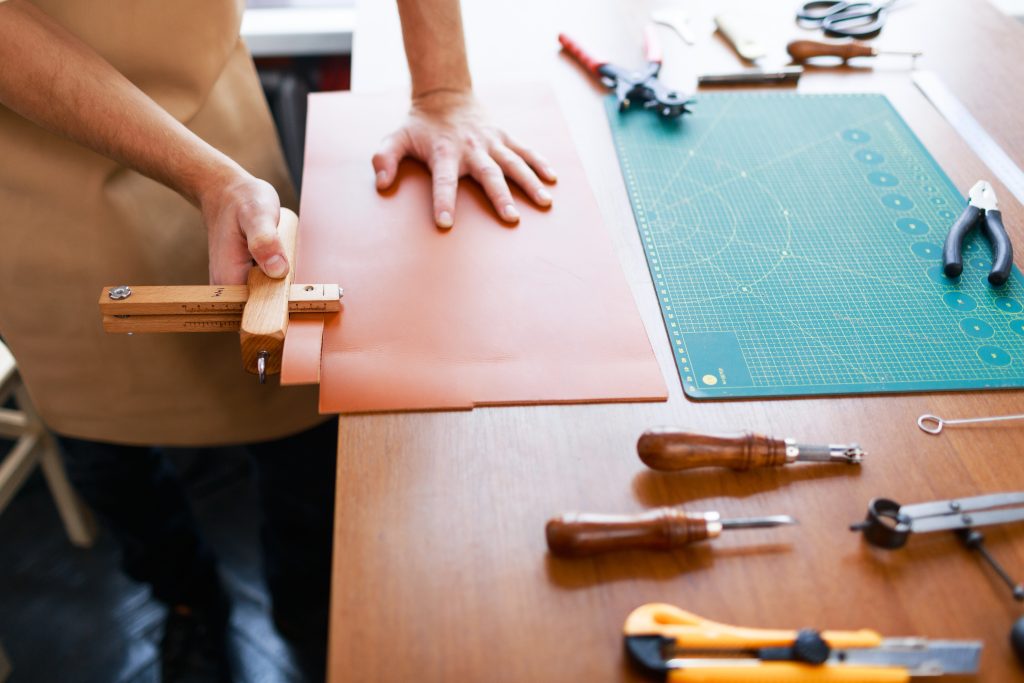
3.2. Target Market Analysis
- Selecting Suitable Markets: Identifying countries with the highest demand and profit margins for handmade leather products.
- Competitor Analysis: Reviewing active brands in the target market, their price ranges, sales channels, and marketing strategies.
- Understanding Customer Preferences: Studying design, color, and style trends specific to each market.
- Assessing Market Entry Conditions: Identifying import tariffs, standards, and legal requirements of each country.
Practical Example: Before entering the German market, an Iranian brand analyzed Euromonitor reports and discovered that cream and light brown leather shoes had the highest sales.
3.3. Developing Pricing and Branding Strategies
- Calculating Export Price: Summing production costs, logistics and customs expenses, profit margins, and intermediary fees.
- Defining Brand Identity: Establishing the brand’s key message, logo, corporate colors, and design philosophy.
- Designing Standard-Compliant Packaging: Including product details, country of origin, HS codes, and certifications.
- Creating a Brand Story: Narrating authenticity, production processes, and ethical values to build emotional connections with customers.
Practical Example: An Iranian leather bag brand emphasized its “sustainable and eco-friendly production,” enabling it to sell products in France at a price 20% higher than the market average.
3.4. Choosing Market Entry Channels
- Partnership with Export Brokers: Leveraging established networks and international negotiation expertise.
- Direct Sales to Major Buyers: Increasing profit margins by cutting intermediaries, but requiring a strong sales team.
- International B2B Platforms: Participating in platforms like Alibaba, Tradekey, and Global Sources to attract wholesale customers.
- Specialized Trade Fairs: Attending events such as MICAM (Italy) or Lineapelle to showcase products to reputable buyers.
Table 3 – Comparison of Different International Market Entry Methods
| Entry Method | Advantages | Disadvantages |
|---|---|---|
| Partnership with Export Brokers | Quick access to buyer networks, reduced negotiation risks, knowledge of regulations | Broker fees, dependency on intermediaries |
| Direct Sales to Major Buyers | Higher profit margins, full control over contracts | Requires strong negotiation skills and legal awareness |
| Online B2B Platforms | Wide reach, lower costs, digital marketing exposure | Intense competition, need for continuous responsiveness |
| Specialized Trade Fairs | Direct buyer connections, opportunity to showcase product quality | High costs, requires preparation and strategic planning |
3.5. Continuous Evaluation and Optimization
- Customer Feedback Analysis: Reviewing opinions, complaints, and suggestions to improve products.
- Competitor Monitoring: Identifying changes in pricing, design, and marketing strategies of competitors.
- Strategy Updates: Continuously adapting to global trend shifts and evolving legal requirements.
Practical Example: An Iranian brand, after receiving negative feedback about the heavy weight of its leather bags, switched to thinner leather and lighter hardware—resulting in a 15% sales increase.
4. Essential Standards and Certifications for Leather Exports
Compliance with international standards and obtaining globally recognized certifications form the backbone of success for any leather brand in international markets. These requirements are not only vital for overcoming legal and customs barriers but also play a crucial role in building trust, credibility, and brand differentiation. Iranian brands seeking sustainable and professional entry into European, American, or East Asian markets must develop a clear strategy for aligning with these standards from the very beginning.
4.1. International Quality Standards
- ISO 9001 (Quality Management System): Provides a framework to ensure consistency in production processes, quality control, and responsiveness to customer needs.
- EN Standards (European Norms): Includes tests for durability, colorfastness, abrasion resistance, and physical/chemical properties of leather.
- ASTM Standards (American Standards): A set of testing methods and technical requirements widely used in the U.S. market.
Advantage: Compliance with these standards not only increases customer confidence but also enables collaboration with renowned luxury and retail chains.
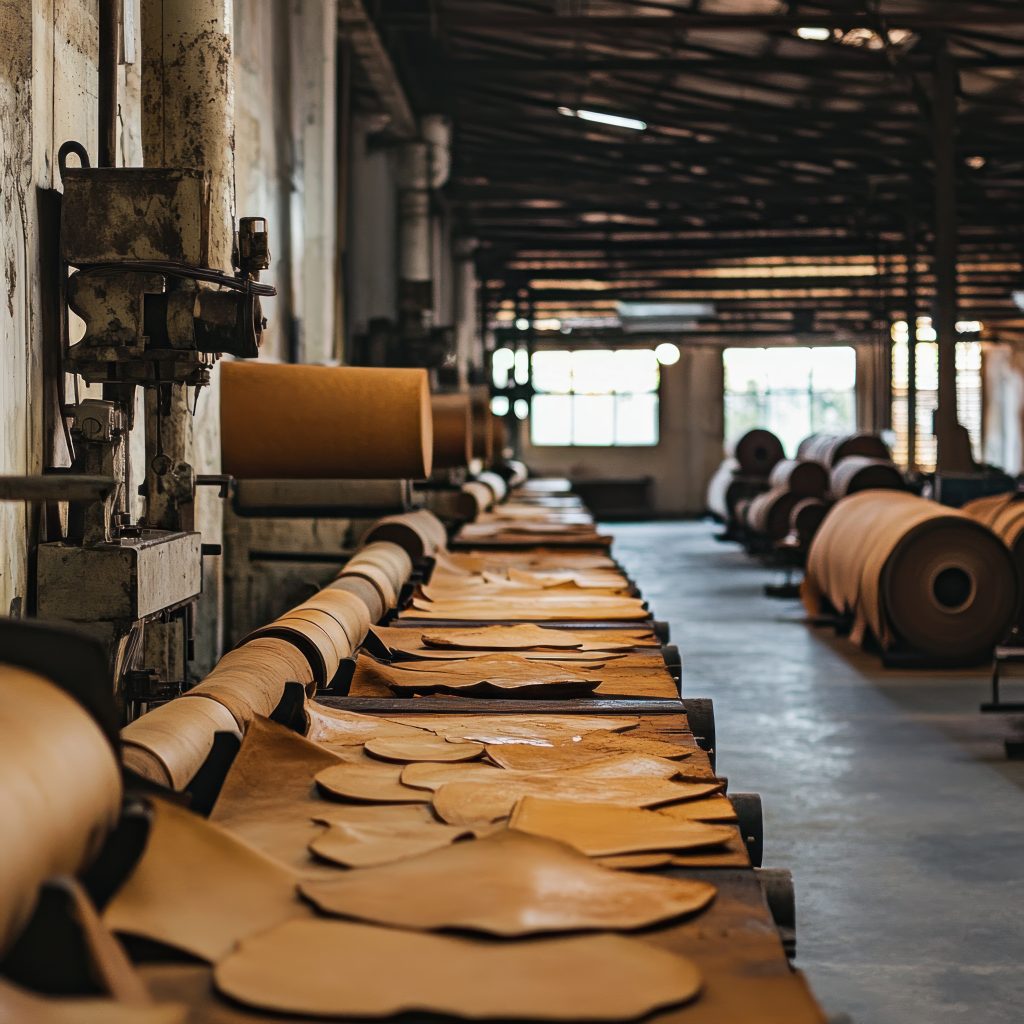
4.2. Safety and Health Requirements
- REACH (Registration, Evaluation, Authorisation and Restriction of Chemicals): EU regulation controlling the use of harmful chemicals in tanning and dyeing processes.
- CE Marking: Certification of product compliance with EU safety, health, and environmental requirements.
- CPSIA (Consumer Product Safety Improvement Act): U.S. regulations ensuring safety of leather goods, particularly children’s and youth products.
Advantage: Compliance with these requirements minimizes the risk of shipment delays, confiscation, or return of goods at customs.
4.3. Ethical and Environmental Certifications
- Leather Working Group (LWG) Certification: Evaluates and certifies sustainable, environmentally friendly leather production processes.
- Fair Trade Certification: Ensures workers’ rights, fair labor conditions, and ethical trade practices.
- ISO 14001 (Environmental Management System): Provides a framework for minimizing the negative environmental impacts of production.
Advantage: These certifications add value for environmentally conscious consumers and ethically driven brands.
4.4. Intellectual Property and Brand Registration in Target Markets
- Trademark Registration: Protects the brand name against counterfeiting and misuse by competitors.
- Industrial Design Registration: Safeguards unique product designs and models.
- International Protection via WIPO (Madrid System): Enables global brand registration and legal enforcement in case of infringement.
Advantage: Ensures intellectual property rights and facilitates legal recourse against violations.
Table 4 – Comparison of Key Certifications and Standards Across Major Markets
| Certification/Standard | Europe (EU) | USA | Asia |
|---|---|---|---|
| Quality | ISO 9001, EN Standards | ISO 9001, ASTM Standards | ISO 9001, JIS Standards (Japan) |
| Environmental | ISO 14001, LWG, REACH | ISO 14001, EPA Regulations | ISO 14001, Eco Mark (Japan) |
| Safety | CE Marking, REACH | CPSIA, ASTM Safety Standards | CCC (China), KC Mark (South Korea) |
| Ethical | Fair Trade, Ethical Trading Initiative | Fair Trade, SA8000 | Fair Trade, SA8000 |
4.5. Benefits of Complying with Standards and Obtaining Certifications
- Enhanced buyer confidence: Greater willingness of wholesalers and luxury brands to collaborate.
- Facilitated market entry: Reduced risk of customs-related or legal obstacles.
- Stronger pricing power: Certified products can command higher prices.
- Long-term brand sustainability: Commitment to environmental and ethical standards reinforces a positive brand image.
5. Digital Tools and Technologies Facilitating Leather Exports
In today’s global trade environment, digital tools serve as powerful accelerators in the export process. Iranian leather brands can leverage these technologies not only to enhance the speed and efficiency of exports but also to reduce costs and expand their international reach. Strategic use of these tools enables access to global customers, streamlined communications, optimized sales processes, and effective logistics control.
5.1. Online B2B and B2C Platforms
- B2B Platforms (Business to Business): Websites such as Alibaba, Global Sources, Tradekey, and Europages that allow bulk product listings for international buyers and distributors.
- B2C Platforms (Business to Consumer): Marketplaces like Etsy, Amazon Handmade, and eBay that enable direct sales to end consumers.
Advantages: Rapid and wide-reaching access to global markets, reduced market entry costs, and the ability to test demand across different regions.
Challenges: Intense competition, the need for regular profile updates, and prompt customer responses.
5.2. Customer Relationship Management (CRM) Systems
Application: Store and manage customer information, track orders, record negotiations, and analyze purchasing behavior.
Advantages: Improved customer loyalty, personalized recommendations, and higher conversion rates from potential leads to actual buyers.
Examples of Tools: Salesforce, HubSpot, Zoho CRM.
5.3. Digital Marketing and SEO
- Search Engine Optimization (SEO): Enhances brand visibility in Google, Bing, and Yahoo search results using relevant keywords.
- International Social Media Presence: Platforms such as Instagram, Pinterest, LinkedIn, and Facebook for showcasing products, storytelling, and direct customer engagement.
- Targeted Advertising: Running campaigns on Google Ads, Facebook Ads, and Instagram Ads with a focus on specific markets.
Advantage: Lower marketing costs compared to traditional methods and the ability to precisely measure campaign effectiveness.
.4. Digital Logistics Management
Application: Coordinate production, warehousing, shipping companies, and customers through Transportation Management Systems (TMS).
Advantages: Optimal route selection, minimized delays, real-time shipment tracking, and complete supply chain transparency.
Examples of Tools: ShipStation, Easyship, Freightos.
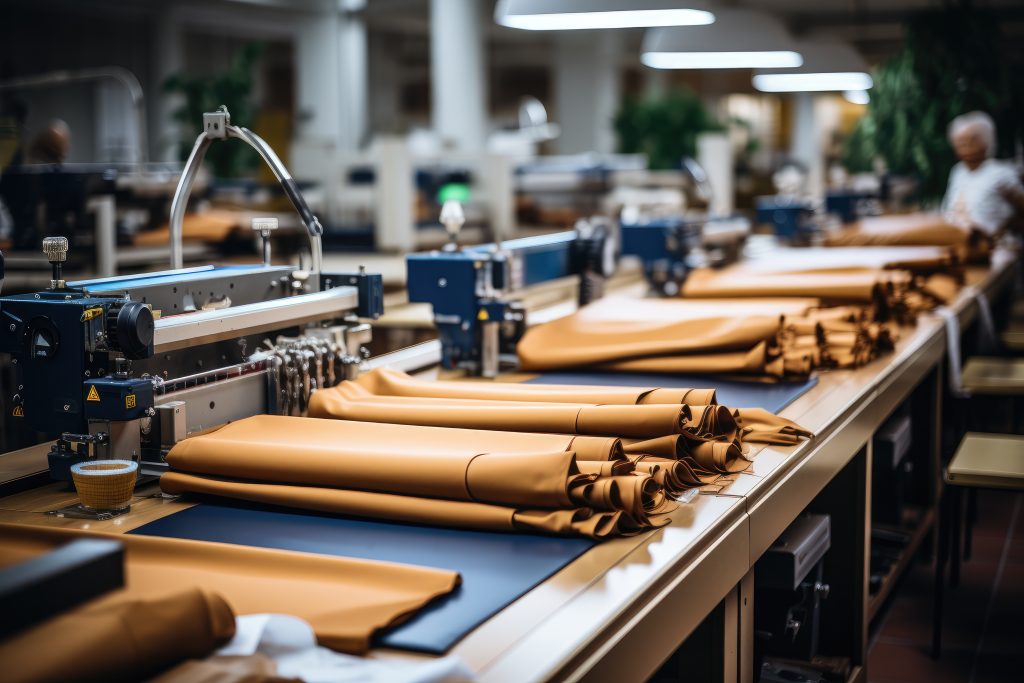
Table 5 – Comparison of Digital Tools in the Export Process
| Digital Tool | Primary Application | Advantages | Disadvantages |
|---|---|---|---|
| B2B Platforms | Wholesale sales to companies and international buyers | Fast access to buyers, increased sales volume | Intense competition, requires active profile and order management |
| B2C Platforms | Direct sales to end customers | Direct customer engagement, higher profit margins | Requires ongoing marketing, managing multiple small orders |
| CRM | Customer data and relationship management | Enhances customer loyalty, increases repeat purchases | Implementation costs, requires staff training |
| Digital Logistics Management | Shipment tracking and coordination | Reduced delays, transparency in delivery | Requires coordination with logistics companies |
5.5 Synergy Between Digital Tools and Export Brokers
Combining these tools with professional brokerage services such as MMF Market enables integrated export management. From identifying potential customers to final product delivery, all stages can be executed with minimal errors and maximum speed.
6. Case Study – Success of an Iranian Leather Brand in the European Market
Real-world examples of Iranian brands that have secured strong positions in international markets serve as practical models for other producers. This section presents the story of the fictional brand “Arta Leather”, which successfully evolved from a small workshop in Isfahan to collaborations with luxury boutiques in Paris and Berlin.
6.1 Brand Introduction
- Year Established: 2016
- Main Products: Handmade leather bags and shoes crafted from vegetable-tanned cowhide.
- Unique Selling Point: Fusion of traditional Iranian design with modern forms, using sustainable materials.
- Initial Production Capacity: 150 units/month, increased to 350 units within two years of exporting.
6.2 Steps to Enter the European Market
6.2.1 Market Analysis
- Reviewed Euromonitor data to identify countries with the highest demand for handmade leather goods.
- Selected Germany, France, and Italy as priority markets based on import volume and willingness to pay premium prices.
6.2.2 Standards Upgrade and Compliance
- Obtained certifications: ISO 9001 (Quality Management), ISO 14001 (Environmental Management), and LWG (Leather Working Group).
- Full compliance with EU REACH regulations restricting harmful chemicals.
6.2.3 Branding and Storytelling
- Redesigned logo and packaging with a luxury minimalist approach.
- Brand narrative: “Persian Art, Timeless Worldwide”, emphasizing craftsmanship.
6.2.4 Participation in International Events
- Exhibited at MICAM, Italy, establishing contact with over 40 major buyers.
- Showcased samples and received direct feedback from European clients.
6.2.5 Collaboration with an Export Broker
- Partnered with a specialized broker to manage negotiations, contracts, and logistics.
- Leveraged the broker’s network to access selected boutiques.
6.3 Achieved Results
- Signed supply contracts with two luxury boutiques in Paris and Berlin.
- Achieved 250% annual sales growth compared to pre-export levels.
- Increased international social media followers by 30%.
- Improved product quality based on direct feedback from foreign buyers.
Table 6 – Key Success Factors of “Arta Leather” in the European Market
| Success Factor | Description | Impact on Results |
|---|---|---|
| High Quality | Use of vegetable-tanned natural leather | Increased customer satisfaction and repeat purchases |
| Compliance | Obtained international certifications | Smooth customs clearance and enhanced buyer trust |
| Strong Branding | Cohesive visual identity and storytelling | Differentiation in Europe’s crowded luxury market |
| Networking | Participation in trade shows, broker partnerships | Fast access to reputable buyers |
| Digital Marketing | Active social media and multilingual website | Direct customer engagement, increased brand awareness |
6.4 Lessons for Other Brands
- Conduct Market Research Before Entry: Understanding target markets prevents costly mistakes.
- Prioritize Standards and Certifications: Even the best products have little chance without recognized certifications.
- Develop Strong Storytelling: Global customers trust brands that share inspiring narratives.
- Work with Export Specialists: Professional brokers and platforms can dramatically accelerate market entry.
7. The Role of Branding and Storytelling in Global Sales
In international markets, the most successful brands are those that go beyond offering a high-quality product and provide customers with a unique experience and identity. Brand storytelling and smart branding are powerful tools that leave a lasting impression on customers, fostering emotional connections and long-term loyalty.
7.1 Importance of Brand Storytelling
- Emotional Connection with Customers: Today’s consumers want to know how, by whom, and with what philosophy their products are made. Sharing authenticity and behind-the-scenes narratives builds trust and emotional engagement.
- Highlighting Values: Storytelling allows brands to communicate values such as sustainability, cultural authenticity, or support for local artisanship.
- Differentiation in Crowded Markets: In highly competitive industries where similar products are offered, a compelling brand story becomes a critical factor for distinction.
- Practical Example: An Iranian brand with the slogan “Every Bag, the Story of a Craftsman” successfully attracted loyal customers in the Japanese market.
7.2 Consistent Visual Identity
- Logo and Brand Colors: The design must align with the brand’s philosophy. Luxury brands often adopt minimalist colors and clean design, while cultural brands may leverage rich colors and traditional patterns.
- Packaging: Beyond product protection, packaging is the customer’s first visual interaction with the brand. High-quality, eco-friendly packaging reinforces a sense of luxury.
- Multilingual Website and Catalogs: Professional presentation of products with high-quality images and detailed descriptions is essential for building trust and boosting sales.
7.3 Story-Driven Marketing Channels
- Videos and Photos of the Production Process: Showing steps from leather selection to final stitching connects customers to the creation journey.
- Customer Experience Sharing: Leveraging testimonials and images from international buyers as promotional content.
- Participation in Events and Exhibitions: Presenting the brand story in person, combined with the tactile experience of the product, leaves a stronger impression.
Table 7 – Comparison of Successful Branding Strategies in the Leather Industry
| Branding Strategy | Example in Global Market | Advantages | Disadvantages |
|---|---|---|---|
| Luxury Branding | Gucci, Hermès | High profit margins, global prestige | Requires heavy investment in marketing and quality |
| Cultural Authenticity Branding | Santoni (Italy), R.M. Williams (Australia) | Differentiation, attracts niche customers | Limited target market |
| Sustainability Branding | Veja (France), Nisolo (USA) | Appeals to eco-conscious customers, aligns with global trends | Higher production costs |
| Handcrafted Artistic Branding | Berber Leather (Morocco) | Emphasis on artistry and human value, appeals to craft lovers | Limited production capacity |
7.4 Role of Branding in Enhancing Global Sales
- Increase in Perceived Value: Customers are willing to pay premium prices for products with strong branding.
- Long-Term Loyalty: A compelling story and identity ensure repeat purchases and customer retention.
- Access to Premium Markets: Professional branding opens doors to high-end boutiques and flagship stores worldwide.
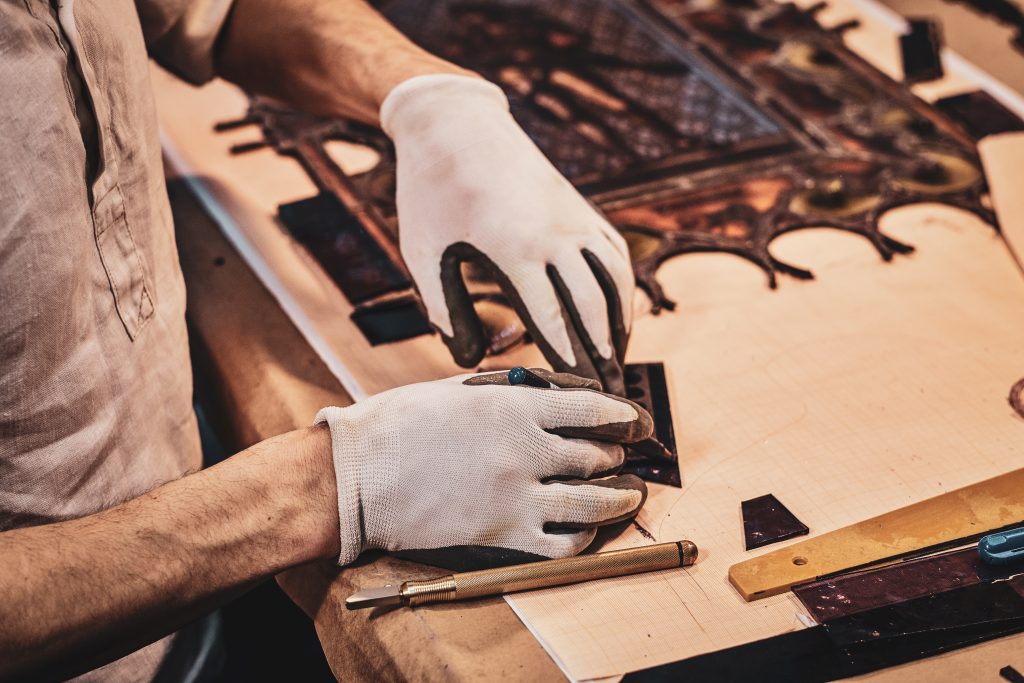
8. Services and Role of MMF Market in Connecting Iranian Brands to International Buyers
MMF Market is a specialized export platform and brokerage firm that aims to bridge the gap between Iranian manufacturing workshops and international markets. By combining hands-on experience, an extensive global network, and advanced digital tools, MMF Market streamlines and optimizes the export process — from market identification to product delivery.
8.1 Networking and Market Development
- Direct Brand Introduction: Connecting Iranian brands with international wholesale buyers, luxury boutiques, and online platforms.
- Expanding Trade Relations: Establishing and maintaining partnerships with reputable importers across Europe, the U.S., the Middle East, and East Asia.
- Facilitating Long-Term Contracts: Building sustainable communication channels for recurring orders and multi-year collaborations.
8.2 Consulting and Certification Support
- Specialized Guidance: Assistance in obtaining key certifications such as ISO, REACH, CE, and LWG.
- Legal Compliance: Helping brands align with quality, safety, environmental, and ethical standards in destination markets.
- Export Readiness Checklists: Providing step-by-step guidelines for preparing export documentation.
8.3 International Marketing and Branding
- Branding Strategy Development: Tailoring brand identity to match the culture and preferences of target markets.
- Multilingual Content Production: Professional photography, videography, catalog design, and website development.
- Digital Marketing & SEO: Search engine optimization and execution of targeted advertising campaigns.
8.4 Logistics and Export Management
- Optimized Transport Routes: Selecting air, sea, or land shipping methods based on speed, cost, and product requirements.
- Packaging and Insurance: Coordinating secure packaging and insuring shipments against damage or theft.
- Online Shipment Tracking: Ensuring full transparency for buyers until final delivery.
8.5 Negotiation and Contract Support
- Professional Negotiations: Achieving the best terms in pricing, payment, and delivery schedules.
- International Trade Contracts: Drafting agreements based on global trade standards (Incoterms).
- Reduced Financial Risk: Securing safe payment methods such as Letters of Credit (LC).
Table 8 – Advantages of Partnering with MMF Market for Iranian Leather Brands
| Area of Collaboration | Services Provided by MMF Market | Impact for Iranian Brands |
|---|---|---|
| International Networking | Access to a wide network of buyers and importers | Faster entry into new markets |
| Standards & Certifications | Guidance in obtaining key certifications | Smooth passage through legal and customs barriers |
| Branding & Marketing | Branding strategy, professional content creation | Increased brand awareness and customer loyalty |
| Logistics & Export | Transport, insurance, and clearance management | On-time delivery and reduced shipping costs |
| Trade Negotiations | Transparent, profitable contracts | Reduced financial risks and higher profit margins |
8.6 Impact of MMF Market on Reducing Export Risks
- Minimizing Legal and Customs Barriers: Ensuring compliance and complete documentation.
- Boosting Negotiation Success Rates: Leveraging experience in dealing with international buyers.
- Optimizing Time and Costs: Utilizing pre-established logistics and marketing networks.
9. Conclusion and Recommendations
The entry of Iranian leather brands into international markets, despite numerous challenges, presents a significant opportunity for sustainable growth and long-term profitability. The exceptional quality of Iranian leather, the craftsmanship of skilled artisans, and the fusion of cultural authenticity with innovative design provide unique advantages not commonly found among competing countries.
However, transforming these advantages into real success in global markets requires strategic planning, compliance with international regulations, strong branding, and targeted marketing. Only through a systematic approach that integrates these elements can Iranian leather brands secure their place in premium international markets and build lasting global recognition.
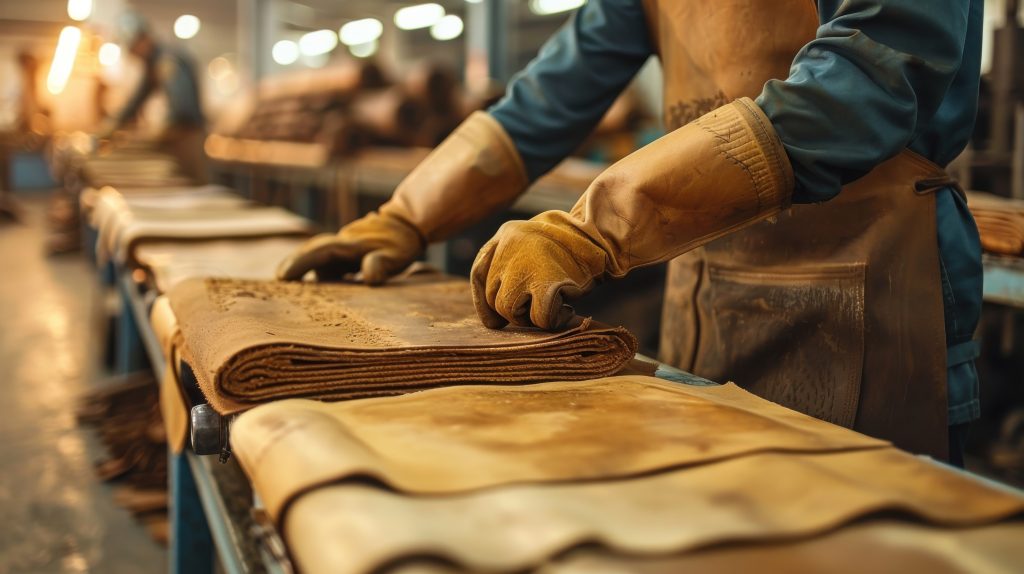
9.1 The Necessity of a Systematic Approach
Entering global markets should not be a matter of trial and error. Iranian brands must pursue their export journey as a step-by-step process grounded in reliable data and thorough analysis.
9.2 Key Recommendations for Export Success
- Prioritize Standards
Obtaining internationally recognized certifications (ISO, REACH, LWG) is a prerequisite for entering premium markets. - Take Branding and Storytelling Seriously
Communicating brand identity, production philosophy, and ethical values creates clear differentiation from competitors. - Leverage Digital Tools
Utilizing B2B and B2C platforms, CRM systems, and digital marketing provides access to global markets without the need for a physical office. - Collaborate with Specialized Brokers
Platforms such as MMF Market, with their expertise and extensive networks, help reduce export risks while accelerating market entry. - Participate in International Events and Trade Fairs
Showcasing products at renowned exhibitions offers opportunities to establish direct connections with key buyers.
Table 9 – Recommended Roadmap for Successful Export of Iranian Leather Brands
| Step | Key Action | Expected Outcome |
|---|---|---|
| Step 1 | Evaluate production quality and capacity | Identify strengths and areas for improvement |
| Step 2 | Analyze target markets and competitors | Accurately select countries and market segments |
| Step 3 | Obtain certifications and comply with standards | Smooth entry through legal barriers and increased trust |
| Step 4 | Develop branding and marketing strategy | Create differentiation and attract loyal customers |
| Step 5 | Choose sales channels and collaborate with brokers | Rapid access to buyer networks |
| Step 6 | Manage logistics and delivery | Enhance customer satisfaction and repeat orders |
| Step 7 | Continuous monitoring and optimization | Maintain competitive advantage and increase market share |
9.3 Future Outlook for Iranian Leather Brands
If Iranian brands can simultaneously focus on product quality, brand identity, regulatory compliance, and the use of modern technologies, they have the potential to secure a significant share of global markets within the next 5 to 10 years. Collaboration with platforms like MMF Market and active engagement in the digital sphere can significantly accelerate this process.
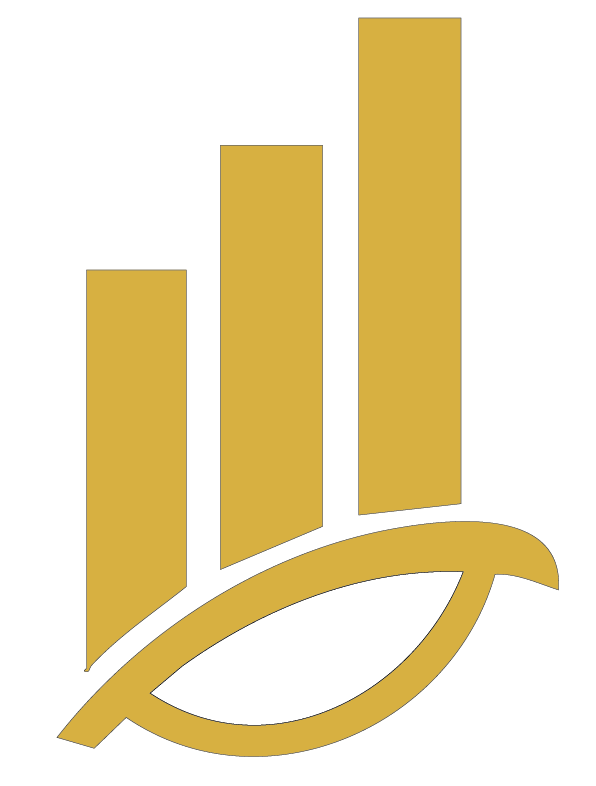
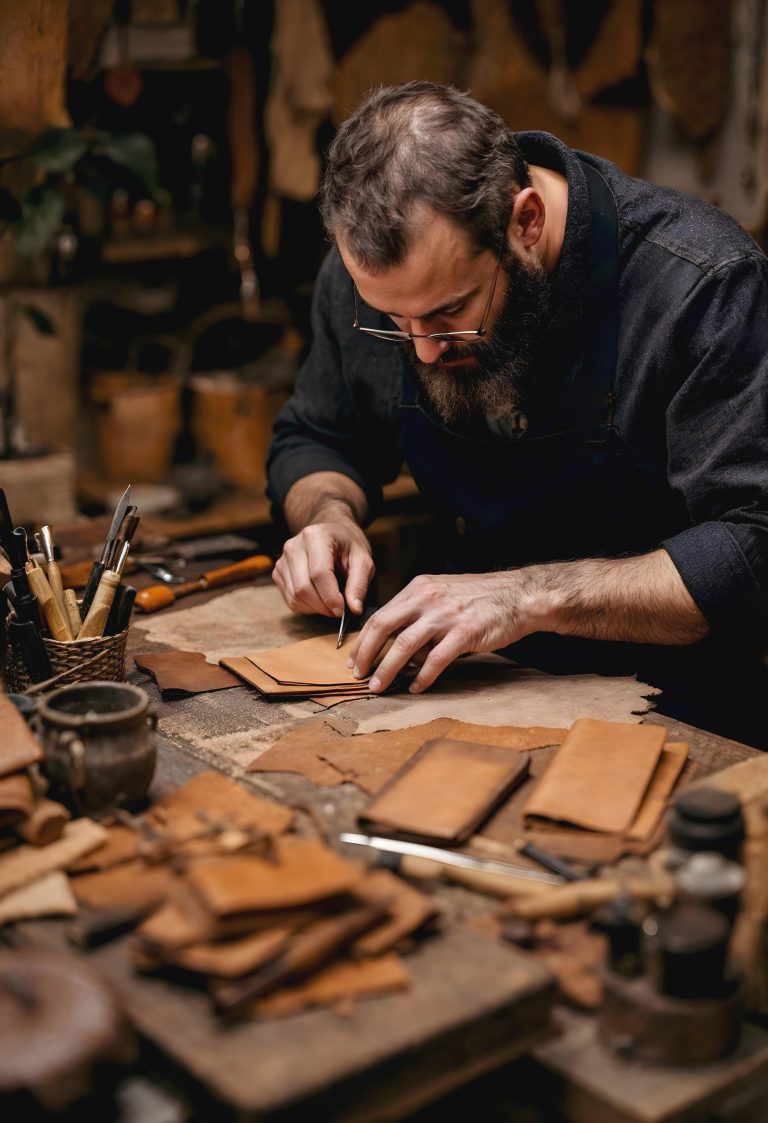
No comments yet.